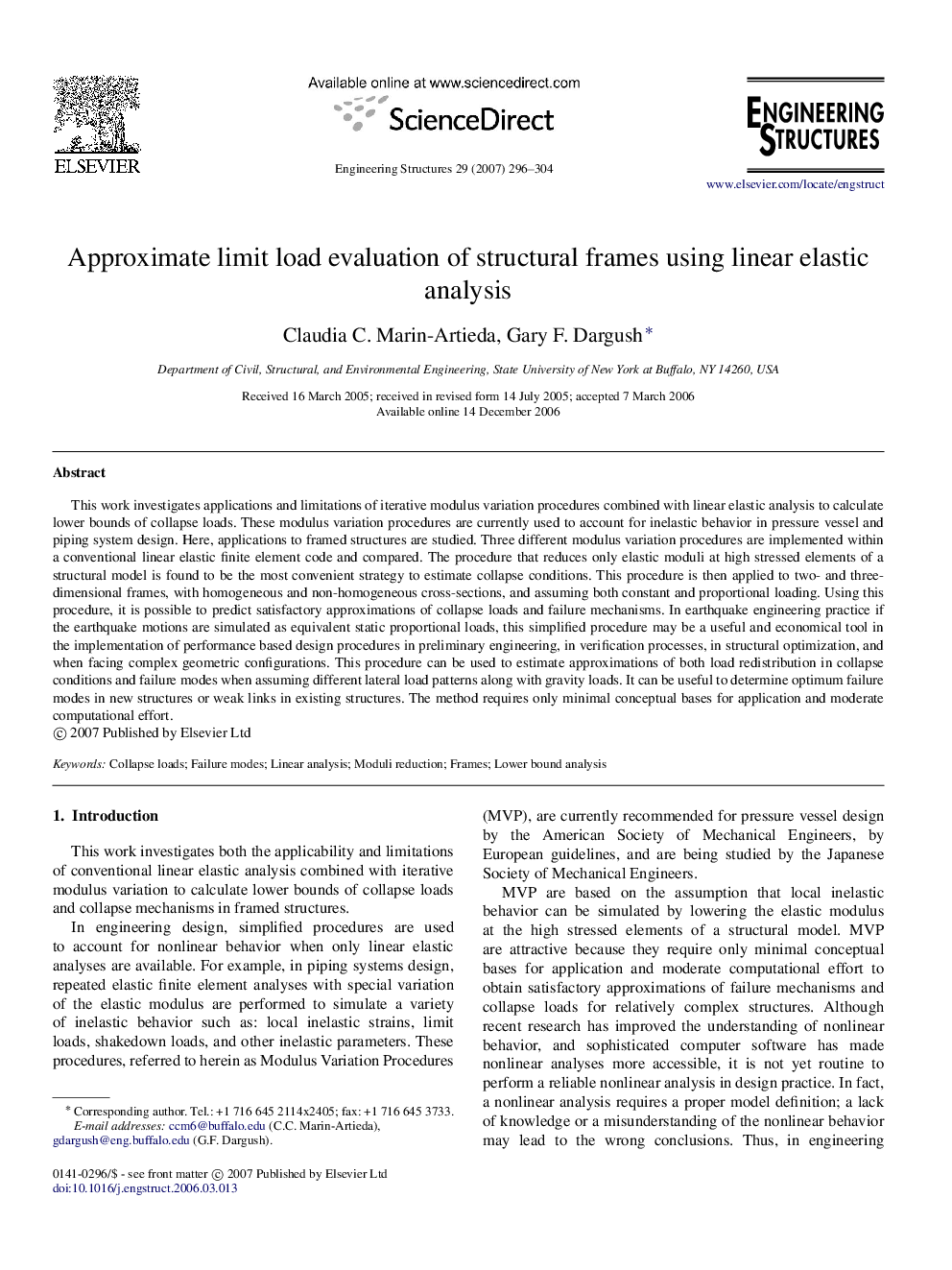| Article ID | Journal | Published Year | Pages | File Type |
|---|---|---|---|---|
| 269060 | Engineering Structures | 2007 | 9 Pages |
This work investigates applications and limitations of iterative modulus variation procedures combined with linear elastic analysis to calculate lower bounds of collapse loads. These modulus variation procedures are currently used to account for inelastic behavior in pressure vessel and piping system design. Here, applications to framed structures are studied. Three different modulus variation procedures are implemented within a conventional linear elastic finite element code and compared. The procedure that reduces only elastic moduli at high stressed elements of a structural model is found to be the most convenient strategy to estimate collapse conditions. This procedure is then applied to two- and three-dimensional frames, with homogeneous and non-homogeneous cross-sections, and assuming both constant and proportional loading. Using this procedure, it is possible to predict satisfactory approximations of collapse loads and failure mechanisms. In earthquake engineering practice if the earthquake motions are simulated as equivalent static proportional loads, this simplified procedure may be a useful and economical tool in the implementation of performance based design procedures in preliminary engineering, in verification processes, in structural optimization, and when facing complex geometric configurations. This procedure can be used to estimate approximations of both load redistribution in collapse conditions and failure modes when assuming different lateral load patterns along with gravity loads. It can be useful to determine optimum failure modes in new structures or weak links in existing structures. The method requires only minimal conceptual bases for application and moderate computational effort.
